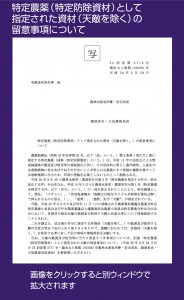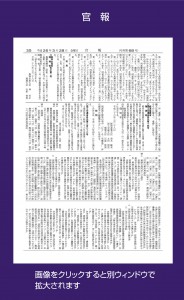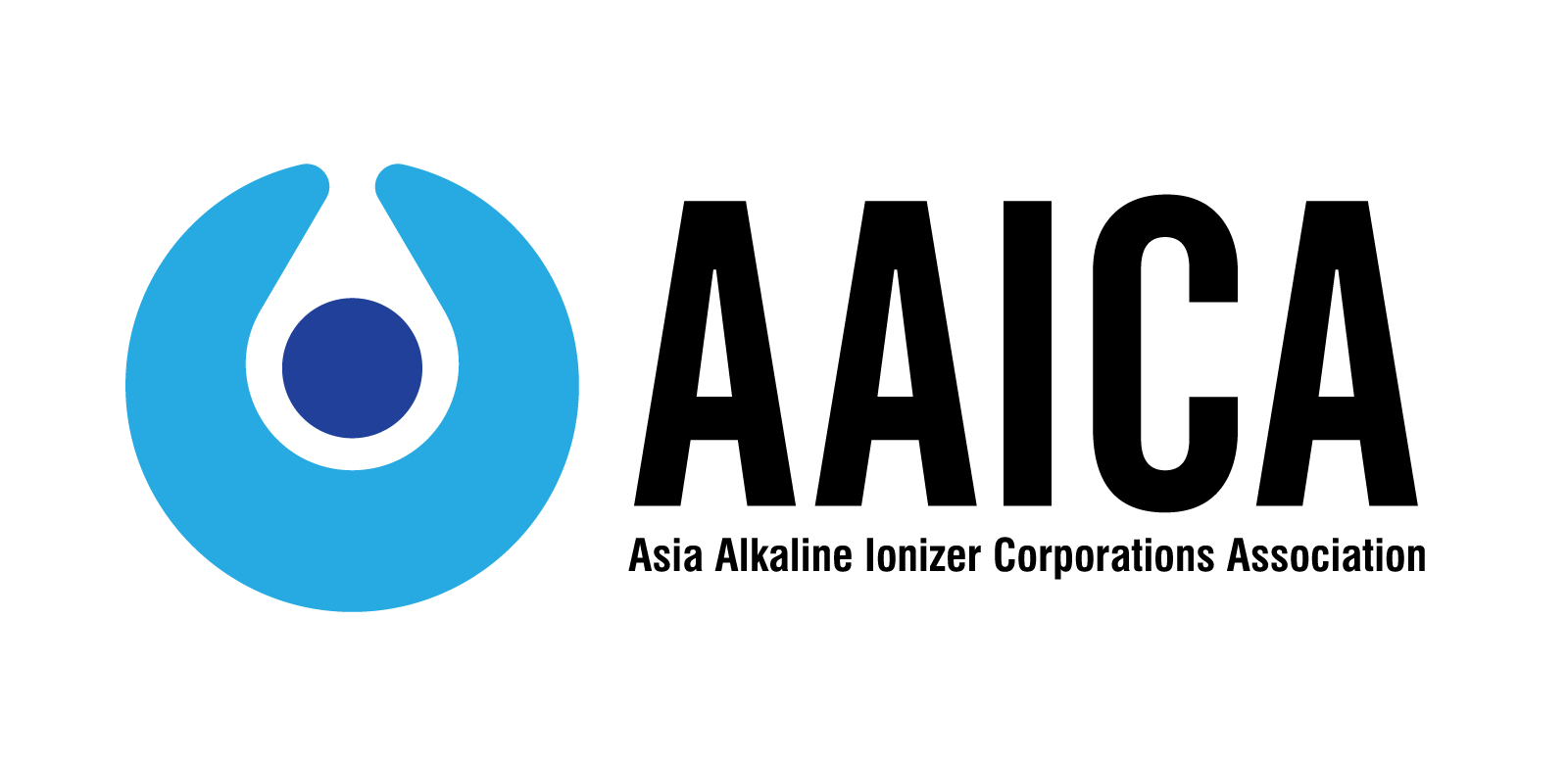About acidic electrolyzed water
Acidic electrolyzed water has been approved and designated by the Ministry of Health, Labor and Welfare under the name of “strongly acidic electrolyzed water” in the medical field and “hypochlorous acid water” in the food field. In March, we received approval and designation from the Minister of Agriculture, Forestry and Fisheries and the Minister of the Environment. The name in the Ministry of Agriculture, Forestry and Fisheries is “electrolyzed hypochlorous acid water”.
The Japan Electrolyzed Water Association has agreed to use the names designated by the government for each field, instead of using the specific names of conventional strong acid electrolyzed water.
The market does not conform to the specific name that our industry has used in the past, but the industry will conform to the market name designated by the country.
The specified control material is “Electrolyzed hypochlorous acid water produced using potassium chloride or hydrochloric acid and drinking water” ( Ministry of Agriculture, Forestry and Fisheries, Ministry of the Environment)
Acidic electrolyzed water as a food additive is “sodium chloride or hydrochloric acid Hypochlorous acid water obtained by electrolysis” (Ministry of Health, Labor and Welfare)
Background to designation of acidic electrolyzed water (hypochlorous acid water) as a food additive
| November 30, 2000, Ministry of Health and Welfare, 328 |
A food additive survey on the designation of electrolyzed water from the Minister of Health and Welfare regarding strongly acidic electrolyzed water applied by the Strong Electrolyzed Water Business Council and slightly acidic electrolyzed water (= weakly acidic electrolyzed water so far) applied by a single company. consultation with the council |
| December 14, 2000 | Joint Council on Toxicity and Additives, Food Sanitation Research Council |
| October 25, 2001 | The results of deliberation by the Food Additives Research Committee (Chairman Masao Hirose), “Both acidic electrolyzed waters, which were individually requested to be designated as additives, have the same essence, so it is appropriate to treat them as one additive.” |
| November 6, 2001 | Pharmaceutical Affairs and Food Sanitation Council, Food Sanitation Subcommittee, Toxicity and Additives Joint Subcommittee (Chairman: Yuji Kurokawa, Toxicology Subcommittee, Mikio Yamazaki: Additives Subcommittee). → “It is possible to designate acidic electrolyzed water, and submit it to the food sanitation subcommittee.” |
| March 21, 2001 | End of public comment After that, explanation to FSG meeting (Food Import Facilitation Promotion Council), WTO notification (notification based on World Trade Organization Agreement) |
| March 18, 2002 | Deadline for Submission of WTO Notification Opinions |
| March 27, 2002 | Pharmaceutical Affairs and Food Sanitation Council (Mr. Mitsuru Yamauchi, Chairman) Deliberation and Report (Riki Sakaguchi, Minister of Health, Labor and Welfare) |
| PFSB No. 0327004 | → Electrolyzed water may be designated as a food additive because it does not harm human health. In addition, it is appropriate to designate the name as “hypochlorous acid water” and establish usage standards and component standards as shown in Attachment 1. |
| Standardized by Food Insurance Department, Pharmaceutical Bureau | →Regarding the report of the Pharmaceutical Affairs and Food Sanitation Council on the designation of food additives and the revision of usage standards |
| June 10, 2002 | Officially approved as a food additive under the name of Minister of Health, Labor and Welfare (Riki Sakaguchi) (Official Gazette No. 3378) |
| Ministry of Health, Labor and Welfare Ordinance No. 75 | Partial revision of the Ordinance for Enforcement of the Food Sanitation Act : Hypochlorous acid water 125 |
 |
 |
Acquisition status of public authorization for acidic electrolyzed water
<Medical field>
★ 1995.04
Electrolyzed water generator medically approved for hand washing
★ 1996
Electrolyzed water generator medically approved for cleaning endoscopes
<Foods>
★2002.06.10
Designated as a food additive (Official Gazette No. 3378, Ministry of Health, Labor and Welfare Notification No. 212)
★2012.04.26
Food additive revision (extension of pH range, etc.) (Official Gazette No. 96, Ministry of Health, Labor and Welfare Notification No. 345)
2012.05.18
Revision of hygiene management manual for mass cooking facilities (Food Safety Notification 0518 No. 1) 2013.12.13
Revision of pickles
hygiene standards (Food Safety Inspection 1213 No. 2)
2014.04.24
Fresh seafood for raw consumption , oysters for raw consumption and frozen foods (limited to frozen fresh seafood for raw consumption), use in container-packaged, pressurized and heat-sterilized foods (Food Safety Notification No. 0424 No. 1)
<Agriculture>
★2006.10.27
Revision of Japanese Agricultural Standards for Organic Processed Foods (Ministry of Agriculture, Forestry and Fisheries Notification No. 1464)
★2012.03.28
Revision of Japanese Agricultural Standards for Organic Agricultural Products (Ministry of Agriculture, Forestry and Fisheries Notification No.833)
★2014.03. 28Designated
as a specified agricultural chemical (specified control material)
Safety of acidic electrolyzed water (hypochlorous acid water)
- Safety of acidic electrolyzed water (hypochlorous acid water) (Part 1)
- Regarding the safety of acidic electrolyzed water (hypochlorous acid water), a safety test was conducted at a facility designated by the Ministry of Health, Labor and Welfare, and good results were obtained. It has been. Below, I will introduce the results of tests using strongly acidic electrolyzed water on mice, etc.
(1) Acute oral toxicity: No toxic symptoms were observed when 50 mg/kg was administered to mice.
(2) Repeated-dose toxicity (subacute toxicity): Rats were allowed to ingest ad libitum for 28 days, and general symptoms, hematological, biochemical, and histopathological examinations were performed. recognized an impact. In addition, when rats were fed ad libitum for 3 months and examined, partial epithelial reactions were observed in oral tissues, but no other toxic symptoms were observed.
(3) Primary skin irritation and cumulative skin irritation: Drops were applied to rabbit skin wounds once a day for 5 consecutive days, but no change was observed. Repeated administration test (for 3 months) of rat hands and feet 30 times a day (1 time immersion for 15 seconds or 30 seconds), observation of skin changes and hematological, biochemical, and histopathological observations However, no skin or systemic abnormalities were observed in the rats.
(4) Acute eye irritation: No change was observed in the cornea, iris, conjunctiva, etc. after 7 days of observation after dripping strongly acidic electrolyzed water.
(5) Skin sensitization: After injecting strongly acidic electrolyzed water into guinea pigs ironically three times a week, skin changes (edema, erythema) were observed, but no changes were observed. (6) Oral mucosal irritation: Changes were observed macroscopically and histopathologically after
hamster cheek pouches were exposed to strongly acidic electrolyzed water under running water for 30 minutes , but no changes were observed.
-
Safety of acidic electrolyzed water (hypochlorous acid water) (part 2)
- (1)Skin sensitization: After injecting strongly acidic electrolyzed water into guinea pigs ironically three times a week, skin changes (edema, erythema) were observed, but no changes were observed.
(2) Oral mucosal irritation: Changes were observed macroscopically and histopathologically after hamster cheek pouches were exposed to strongly acidic electrolyzed water under running water for 30 minutes, but no changes were observed.
(3) Esophageal mucosal irritation: Changes were observed after contacting the esophagus of rats for 3 consecutive 20 seconds at 30 minute intervals, but no changes were observed.
(4) Gastric mucosa irritation: Slight irritation to the gastric mucosa was observed when rats were administered 3 consecutive doses at 30-minute intervals.
(5) Cytotoxicity: No cytotoxicity was observed when the effects on proliferation and morphology of human fibroblasts and human hepatocytes were examined. In addition, the cytotoxicity of commercially available disinfectants and strongly acidic electrolyzed water was examined using rabbit cornea-derived (SIRC cells), human adult cornea-derived (ChangConjunctiva cells), and rat epidermis-derived (FRSK cells). Water was found to be non-toxic.
(6) Mutagenicity test: Ames test was performed using a base substitution mutant strain and a frameshift mutant strain as strains used, and no mutagenicity was observed.
(7) Chromosomal aberration test: After adding strongly acidic electrolyzed water directly to DON cells or adding a metabolic activation system, colcemid was added to accumulate metaphase cells, and chromosomal aberrations were examined, but no mutations were observed. I couldn’t.
(8) Human skin test: Subjected to healthy adult males and females, the safety of frequent use of strongly acidic electrolyzed water was investigated. The clinical trials were conducted at three medical institutions in compliance with the “Standards for Conducting Clinical Trials of Medical Devices: GCP”. Washing by hand rubbing with running water for 2 minutes was performed 15 times a day for 5 consecutive days. As a result, subjective symptoms such as finger dryness, peeling, slippery, tightness, pruritus, fissures, erythema, and loss of pattern were observed (23.4%).
On the other hand, dermatologists found dryness, erythema, and loss of pattern, but they were all mild, and almost all patients recovered quickly after the clinical trial. As described above, even under the relatively harsh clinical trial conditions, the rough skin was mild, and even with moderate skin care and 1 to 2 days of rest even for 5 consecutive days, the skin recovered and no clinically problematic symptoms occurred. It seems difficult.
